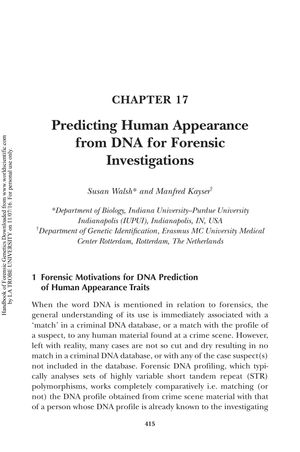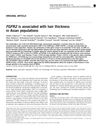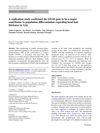Predicting Human Appearance from DNA for Forensic Investigations
September 2016
in “
Security science and technology
”

TLDR DNA can predict physical traits like eye and hair color accurately, especially in Europeans, but predicting other traits and in diverse populations needs more research.
The document from 2016 reviews the progress in Forensic DNA Phenotyping (FDP), focusing on predicting physical appearance traits such as eye color, hair color, skin color, hair loss, and facial morphology from DNA for forensic investigations. It highlights the success of the IrisPlex and HIrisPlex systems in predicting eye and hair color with high accuracy, particularly in European populations. The IrisPlex system achieved Area Under the Curve (AUC) values of up to 0.95 for brown and 0.94 for blue eye colors, while the HIrisPlex system provided accurate hair color predictions with an average accuracy of 69.5% for blond, 78.5% for brown, 80% for red, and 87.5% for black hair color. Challenges remain in predicting non-blue, non-brown eye colors and in accurately predicting skin color due to genetic diversity. The largest Genome-Wide Association Study (GWAS) on androgenetic alopecia (AGA) identified 8 loci associated with the condition, but more research is needed for other physical traits. DNA methylation patterns show promise for age prediction, and while some genes have been associated with facial morphology, the effects are small and the field is far from practical application. The document underscores the need for more research, larger and more diverse sample sizes, and international collaboration to improve FDP accuracy and applicability in forensic cases.






